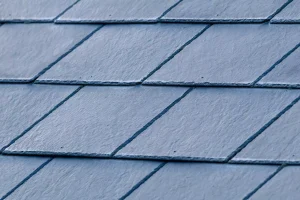
Improving home ventilation can have a big impact on the air quality in your house. If you don’t have any fans or windows to help you ventilate your house, then you may want to consider adding some to your home. Install fans in all the rooms of your house, including your laundry room and bathroom. And make sure to change your filters regularly. You can also use plants to help improve the air in your house.
Open windows and doors
Increasing ventilation is one of the best things you can do to improve the air quality in your home. It can improve physical health, reduce carbon dioxide levels and improve sleep.
Getting more fresh air into your home can be a simple process. The easiest way to do this is to open windows and doors. By doing this you’ll get a fresh breeze into your room and replace indoor air with outdoor air.
However, you don’t have to open all your windows and doors to create a better ventilation system. You can use box fans to blow air out of your windows or place floor fans on opposite sides of your home. This can help keep the air moving and make it easier to cross-ventilate.
When your home is well ventilated, you’ll be less likely to develop respiratory infections. Additionally, it will be easier to maintain a healthy temperature, and you’ll have a healthier and more comfortable living environment.
Install fans in every bathroom, kitchen and laundry room
Having a good ventilation system in your home is crucial to avoid health issues. A centralized ventilation system will also allow you to control humidity levels. This can be done by installing a continuous ventilation fan.
The best way to measure the effectiveness of a fan is the CFM (cubic feet per minute) of air movement it can provide. CFM’s range from 50 to 1,000+, and stronger fans can be more effective at removing moisture.
To determine what fan is appropriate for your bathroom, calculate the square footage of your room. For instance, a six-foot by eight-foot bathroom will require a fan with at least 54 CFM.
If you have a jetted tub, you may need a fan with a higher CFM. Bathrooms with no windows are also good candidates for an exhaust fan.
When choosing a fan for a small or enclosed area, a low profile model will be better. They remove odor and humidity more effectively and are less noticeable.
Change your filters regularly
When you change your filters, you will not only improve your indoor air quality but you will also help your HVAC system stay in tip-top shape. This will prevent costly repairs and maintain the functionality of your heating and cooling system.
While changing your air filter is a simple task, not changing them can have a serious impact on your health and comfort. If you have allergies or asthma, you may need to replace your air filters more often.
A clean air filter will ensure that you get the oxygen you need to breathe. It will also block out pollutants and debris that could otherwise irritate you.
If you have pets, you’ll want to change your air filter more often. If you’re renovating your home, you’ll need to change the air filter to prevent buildup of debris in your air ducts.
Air filters also have the ability to do other cool things, such as clear dust and allergens from your air. Depending on your circumstances, you may need to replace your air filters as frequently as every month or as often as once a year.
Plants can improve air quality
Houseplants are not only beautiful, but they can also improve the air quality of a home. Many people buy plants for aesthetic reasons, but there are many more benefits to having greenery in your space.
The Environmental Protection Agency (EPA) carried out a study on indoor plants and their effects on indoor air quality. They found that plants can help reduce the concentration of volatile organic compounds (VOCs) in indoor air. VOCs are harmful gases emitted by furniture, paints and detergents.
In the study, scientists injected a common indoor air pollutant and then measured the concentration. They found that plants were able to significantly lower the concentration of VOCs. But the purification rate was not high enough to make a real difference on the air quality of a home.
During another experiment, scientists grew potted plants in sealed chambers. They measured the concentration of benzene and formaldehyde, two VOCs that are known to cause respiratory distress. Dracaena plants were shown to remove both these compounds.




